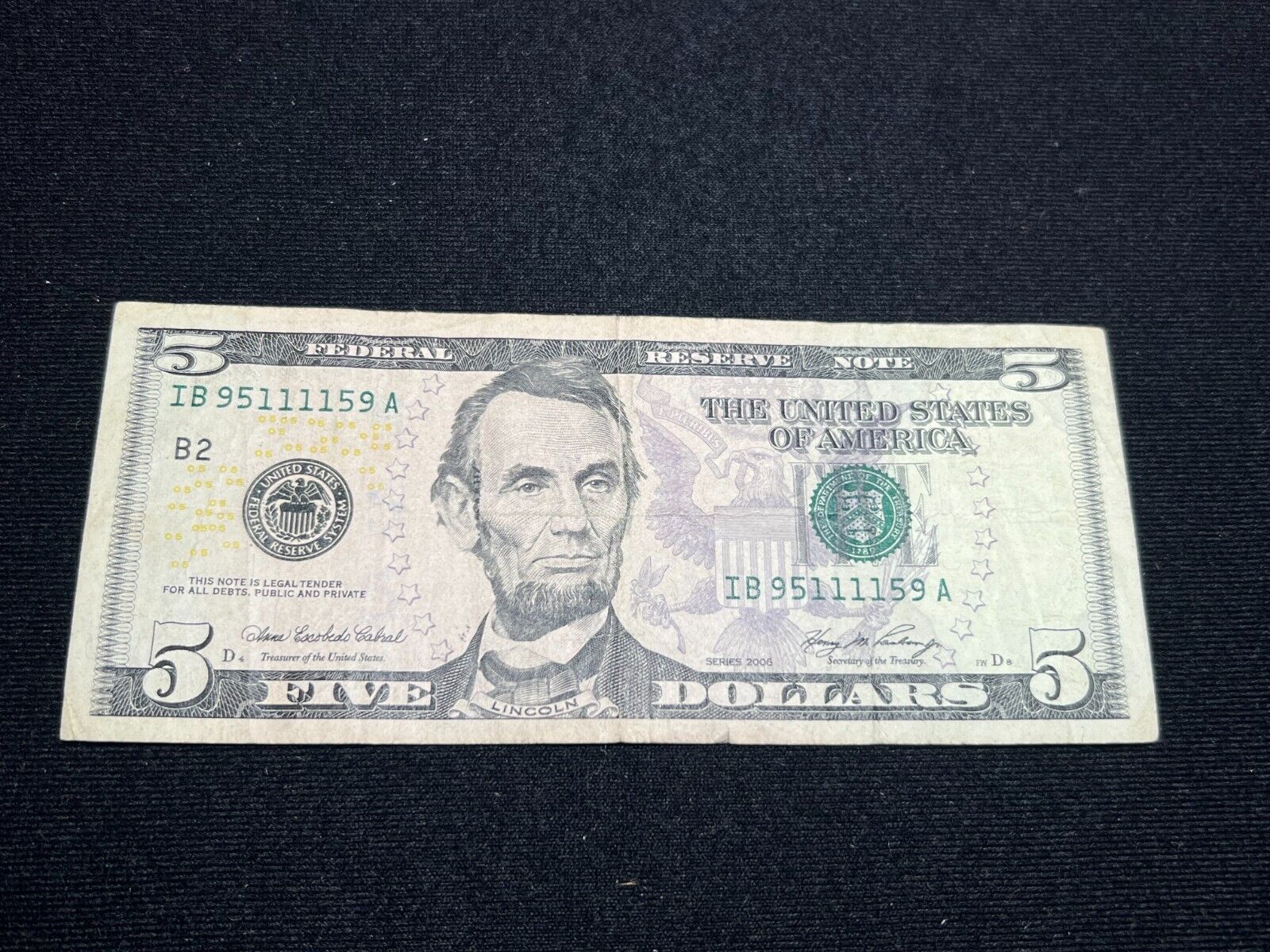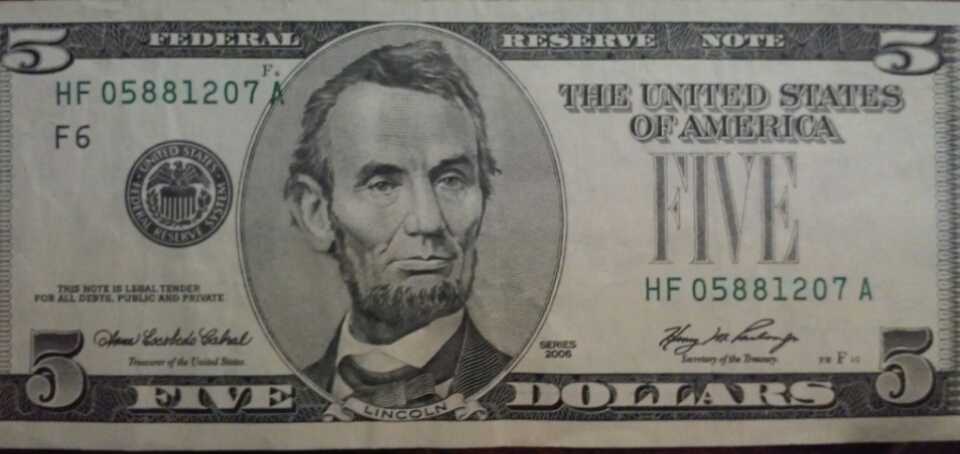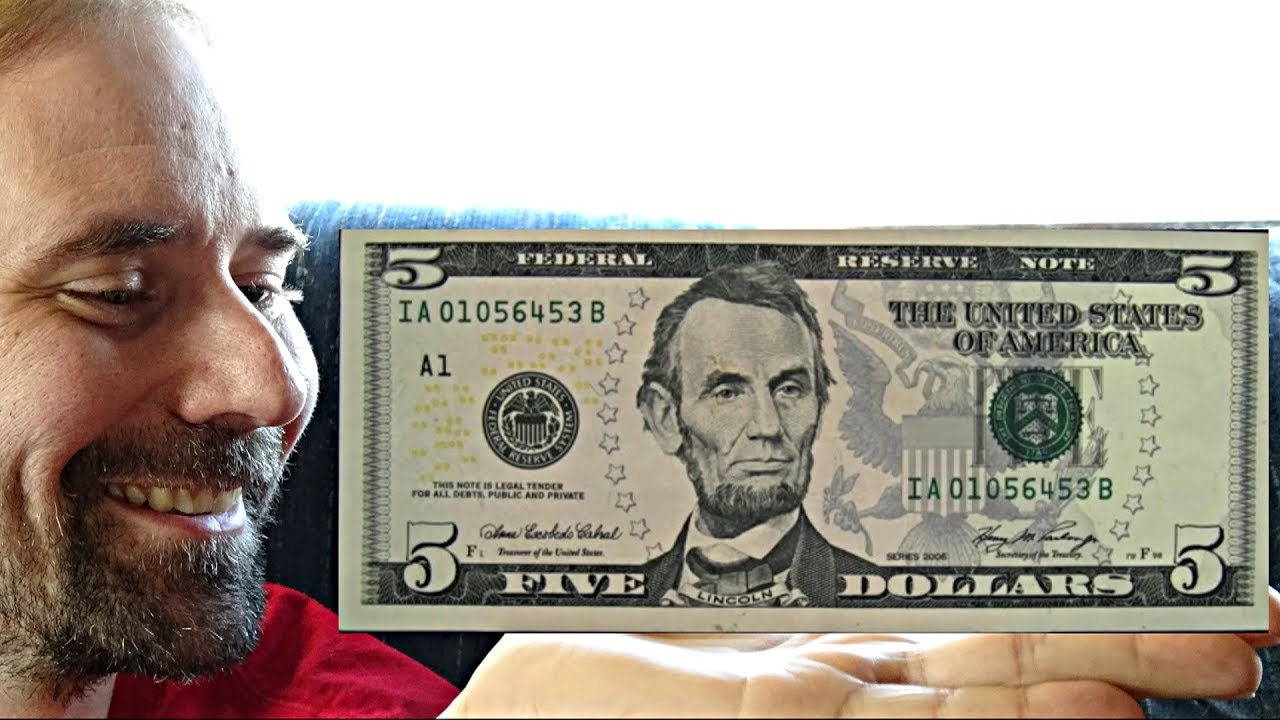The 2006 5 dollar bill holds a place of significance in the history of U.S. currency, especially considering the various changes made to the design and security features that year. You’re a seasoned collector or simply curious about how much a 2006 five dollar bill is worth, this article will give you an in-depth look into its value, the factors that influence it, and the potential for finding rare versions that could fetch more than their face value.
2006 5 Dollar Bill Specifications
Before diving into its value, it’s important to understand the basic characteristics of the 2006 $5 bill. This bill was part of a larger redesign of U.S. currency, which began with the $5 note in 2006.

Key specifications for the 2006 five dollar bill include:
- Denomination: $5.00 USD
- Type: Federal Reserve Note
- Series: 2006 Series
- Signature Combinations: The signatures of Treasury Secretary Henry M. Paulson and Treasurer of the United States Rosario Marin appear on the note.
This note was one of the redesigned bills that introduced new security features, including color and a redesigned portrait of President Abraham Lincoln, whose image appears on the front of the bill.
This was also the first series to feature a security thread and watermarks that made counterfeiting more difficult.
So, when you ask, “What is the 2006 5 dollar bill worth?” it’s essential to recognize that these features set the bill apart from earlier versions.
What Makes the 2006 5 Dollar Bill Valuable?
The 2006 $5 bill isn’t particularly rare, and most bills from this series will be worth only face value—$5. However, there are a few factors that can increase the value of your bill beyond this amount.
Let’s explore these factors.
- Uncirculated Condition: A bill’s condition plays a significant role in its value. A 2006 $5 bill in uncirculated condition will often be worth a premium. Bills in this condition show no signs of wear or damage, maintaining their crispness and original features. These bills are typically graded using a system like the MS 63 grade, which indicates that the note still has its original sharpness, edges, and is well-centered.
- Star Notes: Among the more valuable versions of the 2006 five dollar bill are star notes. Star notes are replacement bills issued by the Federal Reserve to replace damaged or misprinted bills. These notes are rare and more valuable than standard bills. You can identify a star note by looking for a star symbol at the end of the serial number. For the 2006 series, there are no star notes with color, which further increases their rarity. Star notes can be worth anywhere between $15-$20 in uncirculated condition with an MS 63 grade. However, certain star notes are worth significantly more. For example, star notes issued from the Federal Reserve Banks of Richmond and San Francisco are highly sought after and can be worth around $85 in uncirculated condition with an MS 63 grade.
- Series Variations and Banknote Origin: Another factor affecting the value of a 2006 $5 bill is the Federal Reserve Bank from which it was issued. Some banks have specific serial numbers or other identifiers that can make their bills more desirable. For example, bills from the Federal Reserve Bank of Minneapolis are worth about $32.50 in uncirculated condition with an MS 63 grade.
- Error Notes: Occasionally, errors occur during the printing of bills, and these error notes can be more valuable than regular ones. Errors such as misprints, off-center designs, or unusual features can lead to a significantly higher worth for collectors. If you come across a 2006 $5 bill that seems off in some way, it’s worth taking a closer look to determine if it might be an error note, as these bills can fetch a premium on the collector’s market.
How Much is $5 Dollars in 2006 Worth Today?
If you’re wondering about the purchasing power of $5 in 2006 versus today, it has certainly changed.
According to historical inflation data, $5 in 2006 would be equivalent to about $7.83 today, factoring in an average inflation rate of 2.39% per year.

This means that the dollar’s purchasing power has decreased by roughly 56.55% over the past 19 years.
Although the 2006 five dollar bill’s face value hasn’t increased dramatically, the value of money in relation to what it can buy today is an important consideration when thinking about currency worth.
What Are the 2006 5 Dollar Bill Value for Collectors?
As a collector, the value of a 2006 five dollar bill varies greatly depending on the bill’s condition, whether it’s a star note or an error note, and its issuance by a specific Federal Reserve Bank.
Below are general guidelines for understanding the potential value of your bill:
- Circulated Condition (Standard Notes): For the most part, a circulated 2006 $5 bill will only be worth its face value. A typical, well-circulated bill shows signs of wear, and in this condition, it has little to no additional value over the $5 face amount.
- Uncirculated Condition (Standard Notes): If the 2006 $5 bill is in uncirculated condition, you may be able to sell it for a premium. Typically, uncirculated 2006 series $5 bills without color can go for around $15 if graded at MS 63. Bills with color are generally worth around the same amount, but their specific design features may appeal to some collectors.
- Star Notes: As previously mentioned, the star notes are more rare and valuable. The worth of these star notes varies but generally falls within a range of $15-$20 for bills in uncirculated condition. Specific star notes, particularly those from the Richmond or San Francisco Federal Reserve Banks, can fetch upwards of $85.
- Error Notes: Error notes are a wild card in the value department. Errors can drastically increase the worth of a bill, depending on the rarity of the error. For example, a note with an unusual misprint or design flaw can attract significant interest from collectors, which can result in the bill being sold for a premium far beyond its face value.
What Makes A 2006 $5 Bill Unique?
While many bills from the 2006 series aren’t worth more than face value, the redesign itself is a noteworthy aspect of this bill. For example, the security features introduced, like the color-shifting ink and the watermark of President Lincoln’s image, were groundbreaking at the time and are an important part of currency history.
These features make the 2006 series bill more difficult to counterfeit, which is something collectors and currency enthusiasts find appealing.
Additionally, if you are collecting based on the series or looking to complete a set of currency, the 2006 $5 bill is an important addition.
Conclusion: What Is the 2006 5 Dollar Bill Worth?
So, what is the 2006 5 dollar bill worth? For most people, the value of a 2006 $5 bill is limited to its face value unless the bill is in uncirculated condition or is a star note. While the vast majority of 2006 five dollar bills won’t hold much monetary value beyond $5, certain rare variations, such as star notes or error notes, can be worth much more to collectors.
The 2006 five dollar bill offers a variety of interesting possibilities for collectors.
Looking for a $5 bill in excellent condition, searching for star notes, or hoping to uncover a rare error, the 2006 series has much to offer. With the right conditions, a 2006 5 dollar bill could be worth more than just its face value, making it a valuable find for the right collector.

